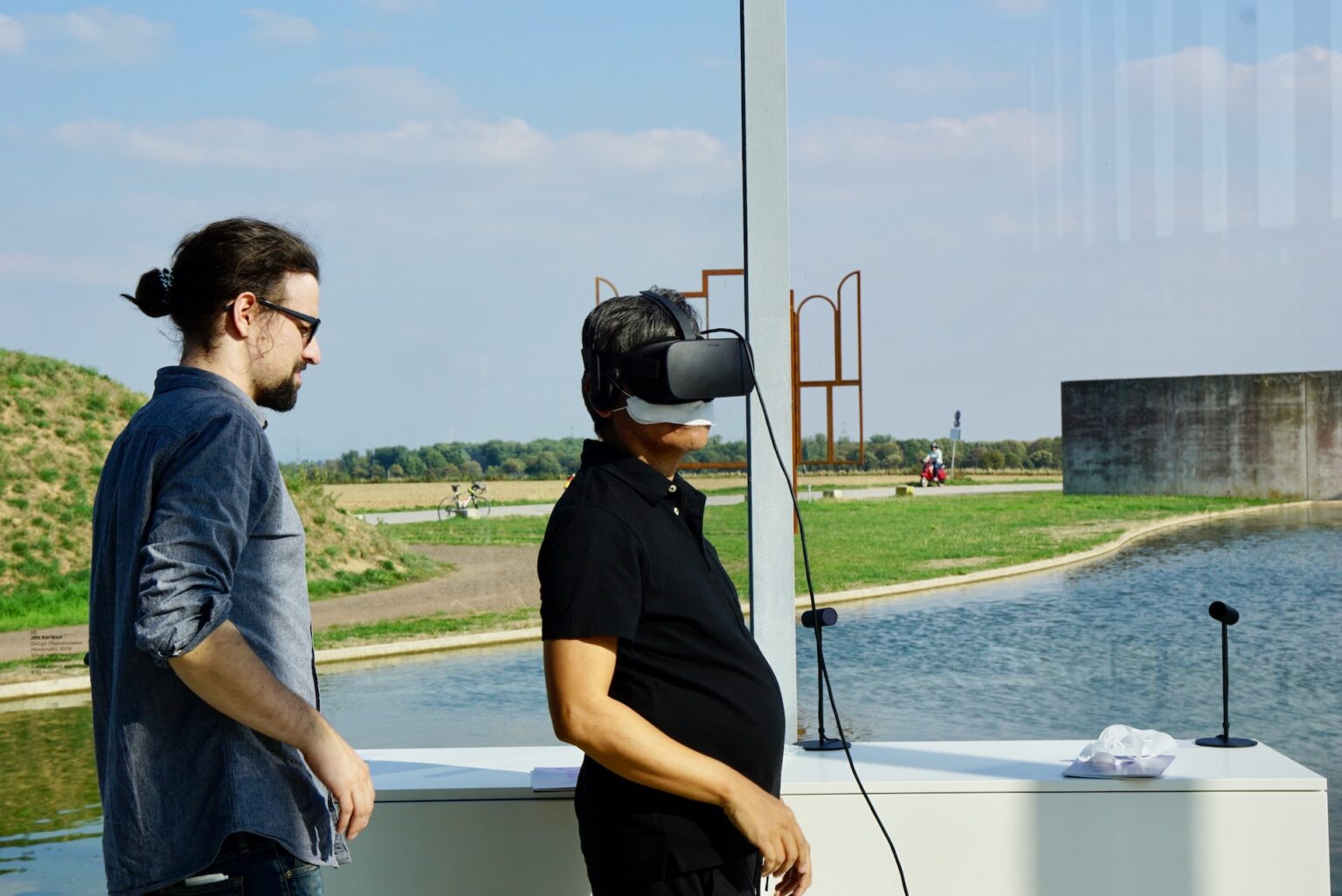Virtual and augmented reality technologies have come a long way in recent years, and their impact on industries such as gaming, education, and healthcare is becoming increasingly evident. Let’s take a closer look at the latest advancements in these technologies and their potential impact on different industries.
Virtual and augmented reality are computer-generated technologies that allow users to experience a simulated environment or overlay digital information onto the real world. These technologies have the potential to transform various industries, including gaming, education, and healthcare. Virtual reality provides an immersive experience that can be used for training and treatment, while augmented reality can enhance education and visualization in fields like medicine. As the development of these technologies continues, we can expect even more innovative applications and advancements in the future.
What is Virtual Reality?
Virtual reality (VR) is a technology that simulates a three-dimensional computer-generated environment, allowing the user to feel like they are physically present in that environment. VR is typically experienced through a headset or other devices, such as gloves or hand controllers, which track the user’s movements and provide sensory feedback.
To create a VR experience, a computer generates a 3D environment and sends it to the headset or display device. The headset then displays the environment to the user’s eyes, creating a sense of immersion. In addition, the user’s movements are tracked by sensors in the headset or controllers, allowing them to move and interact with objects in the virtual environment. This creates a sense of presence, where the user feels like they are really there, even though it is a simulated environment.
To enhance the sense of immersion, VR often includes other sensory feedback, such as sound and touch. For example, haptic feedback gloves can provide a sense of touch when the user interacts with virtual objects, and spatial audio can create a sense of depth and distance in the virtual environment.
Virtual reality (VR) has many applications across various industries. Here are some examples of how VR is being used in gaming, education, and other fields:
Gaming:
VR gaming provides an immersive experience for players, allowing them to feel like they are really in the game. Popular VR games include Beat Saber, Half-Life: Alyx, and Superhot VR.
Theme parks and attractions are also incorporating VR technology into their rides, creating more interactive and thrilling experiences for visitors.
Education:
VR can be used in education to create immersive learning experiences. For example, students can take virtual field trips to historical landmarks or explore scientific concepts in a more engaging way. Companies like Google have developed VR educational apps like Google Expeditions and Tilt Brush.
VR is also being used for medical training, allowing medical students to practice surgeries in a safe and controlled environment.
Other fields:
VR is being used in architecture and real estate to create virtual tours of properties before they are built.
In mental health, VR is used for exposure therapy to help people overcome phobias or anxiety disorders by simulating real-life situations in a safe environment.
In the military, VR is used for training soldiers in combat scenarios, allowing them to practice and develop skills without real-world risks.
What is Augmented Reality?
Augmented reality (AR) is a technology that overlays digital information onto the real world, creating an enhanced version of reality. AR is typically experienced through a smartphone or tablet, but it can also be used with specialized AR glasses or helmets.
To create an AR experience, a device’s camera captures a live video feed of the real world, which is then analyzed and augmented with digital content. The digital content is typically created using computer-generated imagery (CGI) and can include images, text, animations, and even sound.
AR uses a combination of sensors, cameras, and algorithms to track the user’s location and movement and align the digital content with the real-world environment. This allows the user to interact with the digital content as if it were a part of the real world. For example, the user can tap on a virtual button to interact with an object, or move their phone to view the virtual content from different angles.
AR can also use other sensors, such as GPS and accelerometers, to provide additional information about the user’s location and movement, allowing for more accurate and personalized experiences.
Augmented reality (AR) has many applications across various industries. Here are some examples of how AR is being used in healthcare, education, and other fields:
Healthcare:
AR can be used in medical imaging to provide doctors with a more accurate and detailed view of the patient’s anatomy. For example, AccuVein is an AR device that uses vein visualization to help healthcare providers locate veins for injections and blood draws.
In surgery, AR can overlay digital images onto the patient’s body, helping the surgeon navigate complex procedures with greater precision. Companies like Medical Realities and AccuSurgical are developing AR surgical training systems that allow surgeons to practice procedures in a simulated environment.
Education:
AR can be used in education to enhance traditional learning materials. For example, AR can bring textbooks to life by overlaying interactive animations and videos on top of static images. Companies like Blippar and QuiverVision are developing AR educational apps that can be used in the classroom or at home.
AR can also be used for language learning by overlaying translations and pronunciations onto real-world objects. Companies like Google Translate and Word Lens use AR to provide instant translations of signs, menus, and other text.
Other fields:
AR is being used in retail to create interactive shopping experiences. For example, Sephora’s Virtual Artist app allows customers to try on makeup using AR technology.
In architecture and real estate, AR can be used to overlay 3D models of buildings onto real-world locations, allowing clients to visualize what a building will look like before it is built.
AR is also being used in gaming, with popular examples including Pokémon Go and Ingress.
Overall, augmented reality has a wide range of applications and is being used to create more interactive and engaging experiences in various fields.
The Future of VR and AR:
Virtual reality headsets are becoming more affordable and accessible, with companies like Oculus, HTC, and Sony releasing new models with improved resolution and performance.
Augmented reality is becoming more widely available through smartphones and tablets, with Apple and Google releasing AR development tools and frameworks.
Mixed reality, which combines VR and AR technologies, is becoming more popular with devices like Microsoft’s HoloLens and Magic Leap’s One.
Potential Impact of VR and AR on Industries:
Gaming:
VR and AR technology can provide gamers with a more immersive and engaging experience.
VR and AR can also create new gaming experiences, such as interactive escape rooms and location-based games.
Education:
VR and AR can provide students with immersive and interactive learning experiences, allowing them to explore complex concepts in a more engaging way.
AR can enhance traditional learning materials and make them more accessible to students.
Healthcare:
VR and AR can be used for medical training, allowing healthcare providers to practice procedures in a safe and controlled environment.
AR can be used for medical imaging and surgery, providing doctors with more accurate and detailed information.
Challenges and Opportunities in Developing and Using VR and AR:
The high cost of developing VR and AR content can be a barrier for smaller companies and independent developers.
VR and AR can also be physically demanding for users, causing motion sickness and discomfort.
There are concerns around the potential negative effects of prolonged VR and AR use, such as eye strain and reduced social interaction.
However, VR and AR technology also presents new opportunities for businesses and industries, such as creating new revenue streams and improving customer engagement
Conclusion:
The future of virtual and augmented reality is promising as these technologies continue to evolve and improve. The potential applications of these technologies are vast and span across various industries, including gaming, education, healthcare, and retail. As advancements in hardware and software technology continue to push the boundaries of what is possible, we can expect to see even more innovative uses for virtual and augmented reality in the coming years. The immersive experiences and enhanced visualizations that these technologies provide have the potential to transform the way we learn, work, and interact with our surroundings. As a result, virtual and augmented reality will continue to be important areas of research and development in the tech industry, paving the way for exciting new possibilities and experiences in the future.


